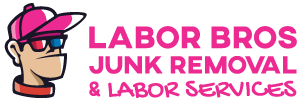Have you ever noticed how hard it is to get rid of junk? For most folks, junk is a collection of unwanted items and appliances just begging to be thrown out. But for whatever reason - work obligations, busy schedules, over-worked brains, or plain old procrastination - we're woefully content to let the junk sit. If you're sick and tired of all the old, junky items in your home and want more room to live and play, you need junk removal in Greenville, SC, today.
At Labor Bros, we mix the most comprehensive junk removal in town with the highest quality general labor services available. That makes Labor Bros your one-stop shop for all your junk hauling and labor needs, from house cleaning to power washing and just about everything in between. Our customers choose Labor Bros because we prioritize friendly, helpful customer service and good old-fashioned hard work. We take pride in our work, and you see evidence of that with each of our Labor Bros, who are anxious to work hard for you, no matter the size of the project. We're very proud of the fact that we're locally owned and operated. We know the local roads, grew up in these parts, and know the people. As such, we offer fair and competitive pricing for all our customers, whether they're new or returning.
Our goal is to make your life easy, so you can focus on the most important aspects of life while we handle the hard stuff. We understand that your life is busy, and you probably don't have the time or energy to haul away old junk or climb up on a ladder to trim your trees. Why risk a trip to the emergency room when you can call the Labor Bros to handle the heavy lifting? At the end of the day, we do the jobs that you can't or just don't want to do - and that makes us happy. Just click or call and consider it done!
Our fully trained Labor Bros have extensive experience, unmatched work ethic, and crazy cardio. This combo lets them tackle a wide variety of junk removal and labor service projects, including:
The Top Junk Removal Company in Greenville, SC
On average, the typical American creates more than four pounds of waste every day. That figure doesn't include the items in your home that need to be hauled away but remain for whatever reason. The reality is most South Carolina residents have tons of junk lying around that they don't need. Unfortunately, most of us don't have the time or patience to get rid of these items in an efficient, eco-friendly way. That's where Labor Bros junk removal swoops in to save the day.
What is Junk Removal in South Carolina?
If you have never used or even heard of junk removal, don't sweat it - we've got you covered. Junk removal is an on-call service that removes all of the old trash and junk from your home or business. It works like this:
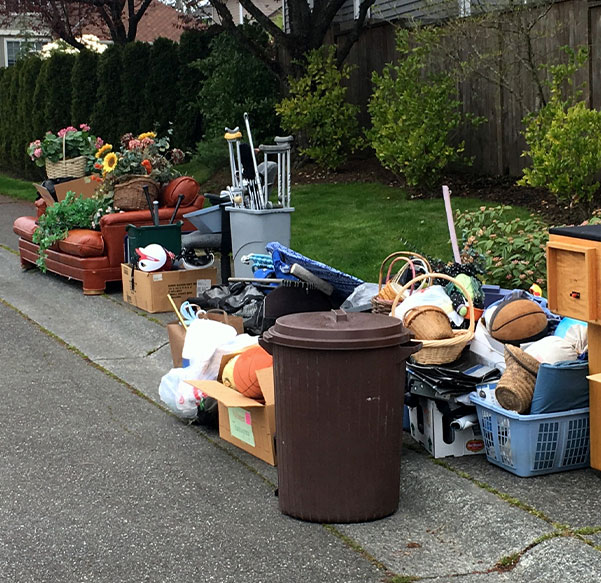

Call or Click
You give our office a call or use our online contact form to set up an appointment. You let us know how much junk we'll be hauling in our junk removal trucks. You then choose a time and date for an appointment, and the Labor Bros will be there on time, ready to work.

Haul Away
Once you give us the green light, our team will get to work hauling all your old debris and junk items from your home or office. It's that simple!

Time and Date
We'll come to your location to get the full scope of the job we're completing for you. Once we do, you get a no-obligation, affordable quote.
What Are the Most Common Junk Removal Items?
Here at Labor Bros, we've hauled away an incredible amount of junk since we opened our doors. Whether it's the hundreds of unsightly, heavy mattresses or old, unusable TVs, our crew has hauled some serious junk over the years. For each truckload of junk that we remove from a home or business, we work hard to donate applicable items and recycle others, to give back to the community and keep it clean.
When it comes to junk removal in Greenville, SC, here are some of the most common items we remove:
Mattresses
Even the best mattresses will need to be replaced with enough time. Over the years, your mattress will begin to break down, causing you more pain than pleasure when your head hits the pillow. When your quality of sleep is affected, so too is your day-to-day life and wellbeing. To make matters worse, your old mattress is a haven for dead skin cells, hair, and even bugs. When it gets to this point, it's time to get rid of your mattress. Unfortunately, that can be easier said than done, especially if you're working 40 hours a week and must balance a family too. Luckily, the Labor Bros can remove your old mattress quicker than it takes you to snooze on a Sunday afternoon.
Labor Bros Pro Tip: Mattress parts like steel springs, wooden frames, and coils can often be donated or recycled. Our team is happy to handle this part of the junk removal process, so you don't have to!
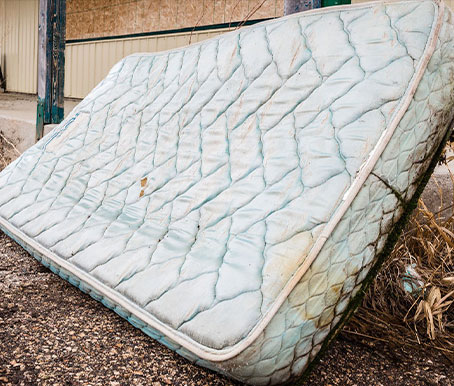
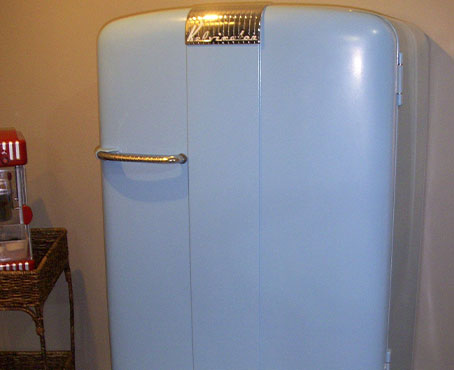
Refrigerators
If you plan on upgrading your kitchen, chances are you will need to update your old fridge too. Refrigerators are notorious for being big, clunky, hazardous appliances to remove. Most folks don't want to deal with the lengthy process of removing the appliance and disposing of it safely. That's where the Labor Bros come in! Whether you have a regular-sized fridge at your home or several large chest freezers at your business, the Labor Bros are here to haul them away today.
Labor Bros Pro Tip: Remember, many refrigerators and freezers have harmful chemicals that need to be disposed of properly. The Labor Bros always take these hazards into account, so you don't risk your health. Once these materials have been dealt with, our junk removal experts will either donate your unwanted fridge or haul it to the appropriate recycling facility.
Flat Screen TVs
With new technology and features debuting every other day, it's no surprise that we haul away old TVs every day. Whether you're moving to a new home or just want a new TV, we can remove your old flat screen quickly and safely. Our customers choose the Labor Bros for their TV removal not just because we're fast and effective, but because many modern TVs contain hazardous materials. Once our team removes your old TV from your home or business, we'll make sure your TV is disposed of in an eco-friendly manner.

Your First Choice for General Labor in Greenville, SC
In addition to our junk removal services, Labor Bros also offers the highest quality general labor services in South Carolina. In today's fast-paced world, many home and business owners don't have the time or staff to handle labor-intensive jobs like garage cleanouts and yard debris removal. There's no need to call in a favor with your best friend or father-in-law. Contact the Labor Bros for fast, efficient service for any of your general labor projects. We save you time, money, and the possibility of injuring yourself or your friends.
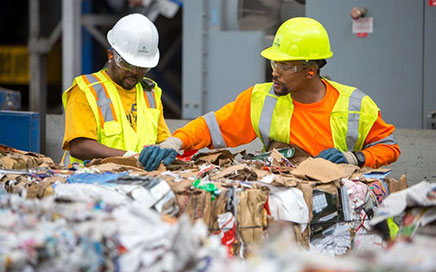
General Labor Services for Residential Needs
If you own a home, you probably know how frustrating it can be to keep up with odd jobs around the house. Sometimes, you need a little more than a helping hand - you need a team of experienced professionals to get the job done right. And that, in a nutshell, is why we founded Labor Bros - to give good people like you the chance to keep their homes looking great, inside and out. Here are just a few of the most common general labor jobs we complete for homeowners in South Carolina:
Garage Cleanouts:
If you're anything like us, your garage space doubles as a storage unit. Over time, the items you store in your garage can pile up. Often, these items go unused for years, essentially becoming junk right before your eyes. At some point, you will need all that junk and debris cleaned out. When you want it done right, it's time to call the Labor Bros. Our team will not only remove the junk from your garage - we'll clean your garage afterward, so it looks and feels like it was brand new.
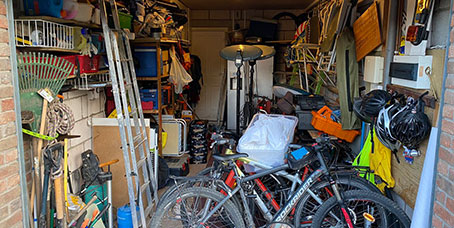
Yard Debris Cleanup:
Cleaning up your yard debris can be a real pain in the butt. You need the right clothes to protect your legs and arms, gloves for your hands, possibly a back brace, and a lot of patience. After you're done, you're bound to need a shower and a long break. With all that in mind, it's no wonder why so many South Carolina residents call the Labor Bros for yard debris removal! Our general labor techs have cleaned up dozens if not hundreds of yards, and they can help you too. We make yard debris cleanup easy by taking everything: limbs, leaves, grass clippings, wood chips, and more. Simply click or call, and we'll haul it all!
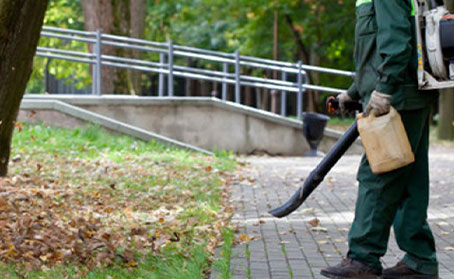
Assembly Services:
If you just bought a new couch or desk but don't have the time to set it up yourself, call the Labor Bros for a fast solution. Whether you're moving into a new home and you need help mounting your TV, or you need a large piece of furniture assembled, we can do it all.
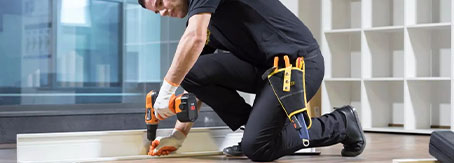
General Labor Services for Commercial Needs:
At Labor Bros, we don't just serve homeowners - we offer general labor and junk removal services for businesses too. All businesses generate junk in some form or fashion. Typically, entrepreneurs don't have the time to handle junk removal and odd jobs like window washing on their own. That's why business owners in South Carolina trust the Labor Bros - because we make their lives easier and more productive, at a reasonable rate. If you're sick of making complicated arrangements that don't fit your business needs, it's time to call our office. We can help with just about any general labor services you need, from removing old office furniture to transporting new equipment to your job site.
Here are some of our general labor specialties for local business owners:
- Interior Cleaning & Maintenance
- Exterior Cleaning & Maintenance
- Window Washing
- Office Cleanouts
- Moving Services
- Parking Lot Surfacing
- Much More

Too Big? Too Heavy?
Let the Strong Men Move It!
Call or Text 815-931-3993 to receive a FREE QUOTE or to set up your
appointment Today!
The Labor Bros Junk Removal
Difference
At the Labor Bros, we do junk removal a little differently than our competition. We strive to provide the very best residential and commercial junk removal in Greenville, SC. To achieve that goal, we prioritize customer service, meaning our clients come first before anything. We know it can be hard to trust junk removal companies, which is why we offer transparent services and pricing. No small print. No sneaky fees. Just hard work at a cost-conscious rate.
As professionals, we treat your home or business like it was our own. Our Labor Bros will work as long as it takes to get the job done while respecting your space. At the same time, we're not your cable TV technician, so we won't be moping around your house all day. We'll show up on time and get the job done effectively, so you can get back to living life.
When you book an appointment for junk removal, you can feel good knowing we'll recycle as much of your used junk as possible - because Mother Earth needs a helping hand too. If you're looking for a hassle-free junk removal experience with fair, upfront pricing, look no further than the Labor Bros.
 815-931-3993
815-931-3993
Free Consultation
Latest News in Greenville, SC
Drive drop third straight in Wilmington; fall 6-4 Saturday
MiLB.comhttps://www.milb.com/greenville/news/gvlatwil-april-20-2024
The Greenville Drive (4-10) added a run in the eighth and one in the ninth and put the tying run at the plate with two outs in the ninth but the Wilmington Blue Rocks (10-4) hung on to down the Drive 6-4 Saturday night.A pitchers’ duel ruled the game for much of the early going as the teams combined for just five hits through five innings as Drive starter Hayden Mullins and Wilmington starter Riley Cornelio dealt from the mound.The Drive would strike first in the second, however, as a walk and fielding error put Juan Chac...
The Greenville Drive (4-10) added a run in the eighth and one in the ninth and put the tying run at the plate with two outs in the ninth but the Wilmington Blue Rocks (10-4) hung on to down the Drive 6-4 Saturday night.
A pitchers’ duel ruled the game for much of the early going as the teams combined for just five hits through five innings as Drive starter Hayden Mullins and Wilmington starter Riley Cornelio dealt from the mound.
The Drive would strike first in the second, however, as a walk and fielding error put Juan Chacon and Luis Ravelo on third and first respectively before Miguel Ugueto grounded into a double play that scored Chacon for the 1-0 lead.
John McHenry answered for the Blue Rocks in the bottom half of the second, chipping in a sac-fly after base runners reached previously on a hit-by-pitch, single, and a catcher interference call. The Drive broke the tie in the fourth on a Tyler Miller double, scoring Chacon again to make it 2-1.
But the fifth inning would be the turning point in the game as Blue Rocks ultimately took the lead for good. A Jonathan Thomas sacrifice bunt back to Mullins allowed T.J. White to score and knot the game. It’d be the last batter Mullins faced as he officially worked 4.2 innings, allowing three hits, three runs while striking out six. Gabriel Jackson took over for Mullins, loading the bases thanks to two walks. His second wild pitch of the inning would score Marcus Brown to make it 3-2 Blue Rocks before picking up the final out on a strikeout.
After a 1-2-3 inning for Jackson in the sixth, the seventh inning would be fatal for Jackson as he loaded the bases. Viandel Pena singled, Daylen Lile chipped in a sac-fly, and Kevin Made smacked a double in succession to add three more runs for Wilmington to make it 6-2. Jackson finished the night allowing two runs on three hits while walking three.
The Drive tried to mount a comeback as Ugueto chipped in a sac-fly in the eighth and Allan Castro slapped a sharp RBI-single in the ninth to cut the lead to 6-4. Ronald Rosario would come to the plate representing the tying run with two outs in the ninth and shoot a hard liner to the right field gap, but a diving catch by Thomas prevented any more thoughts of a comeback and preserved the Blue Rocks 6-4 victory.
The Greenville Drive return to action tomorrow, April 21 at 1:05 p.m. for the finale of the series in Wilmington. The Blue Rocks clinched the series victory with Saturday's win, marking the third series in a row the Drive have lost.
Heart launches tour in South Carolina, promises fan favorites - and new music
wltx.comhttps://www.wltx.com/article/entertainment/music/rock-band-heart-world-tour-south-carolina-new-song/101-8a0b5f22-3e18-4f6d-b7a6-978742289133
The tour kicked off Saturday in Greenville, South Carolina, and will hit cities including Atlanta, Boston, Baltimore, Pittsburgh, Milwaukee, Cleveland and Detroit.Credit: (Photo by Danny Moloshok/Invision/AP, File)Nancy Wilson, left, and Ann Wilson, right, of the band Heart perform as Heart is inducted into the Rock and Roll Hall of Fame.NEW YORK — Heart — the pioneering band that melds Nancy Wilson’s shredding guitar with her sister...
The tour kicked off Saturday in Greenville, South Carolina, and will hit cities including Atlanta, Boston, Baltimore, Pittsburgh, Milwaukee, Cleveland and Detroit.
Credit: (Photo by Danny Moloshok/Invision/AP, File)
Nancy Wilson, left, and Ann Wilson, right, of the band Heart perform as Heart is inducted into the Rock and Roll Hall of Fame.
NEW YORK — Heart — the pioneering band that melds Nancy Wilson’s shredding guitar with her sister Ann’s powerhouse vocals — is hitting the road this spring and fall for a world tour that Nancy Wilson describes as “the full-on rocker size.”
“I’ve been strengthening. I’ve got my trainer,” she says. “You go one day at a time and you strengthen one workout session at a time. It’s a lot of work, but it’s the only job I know how to do.”
The Rock & Roll Hall of Famers who gave us classic tracks like “Magic Man,” “Crazy on You” and “Alone” will be playing all the hits, some tracks from of their solo albums — like Ann Wilson's “Miss One and Only” and Nancy Wilson's “Love Mistake” — and a new song called “Roll the Dice.”
“I like to say we have really good problems because the problem we have is to choose between a bunch of different, really cool songs that people love already,” says Nancy Wilson.
Like “Barracuda,” a sonic burst which first appeared on the band’s second album, “Little Queen” and is one of the band’s most memorable songs.
“You can’t mess with ‘Barracuda.’ It’s just the way it is. It is great. You get on the horse and you ride. It’s a galloping steed of a ride to go on. And for everybody, including the band."
The tour kicks off Saturday at the Bon Secours Wellness Arena in Greenville, South Carolina, and will hit cities including Atlanta, Boston, Baltimore, Pittsburgh, Milwaukee, Cleveland, Detroit, as well as the New Orleans Jazz and Heritage Festival and Red Rocks Amphitheater in Morrison, Colorado. International dates include stops in London, Oslo, Berlin, Stockholm, Montreal and Glasgow.
The band's Royal Flush Tour will have Cheap Trick as the opening act for many stops, but Def Leppard and Journey will join for three stadium dates in Cleveland, Toronto and Boston this summer.
Ann and Nancy Wilson will be filled out by Ryan Wariner (lead and rhythm guitar), Ryan Waters (guitars), Paul Moak (guitars, keyboards and backing vocals), Tony Lucido (bass and backing vocals) and Sean T. Lane (drums).
The tour is the first in several years for Heart, which was rocked by a body blow in 2016 when Ann Wilson’s husband was arrested for assaulting Nancy’s 16-year-old twin sons. Nancy Wilson says that's all in the past.
“We can take any kind of turbulence, me and Ann, and we’ve always been OK together,” she says. “We’re still steering the ship and happy to do it together. So we’re tight.”
The new tour will take them to Canada, which was warm to the band when they were starting out as what Nancy Wilson calls “a couple of chicks from Seattle.” She recalls Vancouver embracing Heart and touring in one van across Canada in the dead of winter on two-lane highways.
The Wilson sisters broke rock's glass ceiling in the '70s, and Nancy Wilson says they only had male influences to look to, like Led Zeppelin, Pink Floyd, the Beatles, the Rolling Stones and the Moody Blues.
Now she says she looks out and loves seeing generations of female rockers. “You have boygenius and you have Billie Eilish and you have Olivia Rodrigo and so many amazing women — Maggie Rogers and Sheryl Crow, who calls us her big influence. And then Billie Eilish might have Sheryl Crow as her influence. So it’s a really nice legacy to pass along. I like to say we’re the OG — the original gangsters — of women and rock.”
Heart has made it into the Rock Hall, won Grammys, sold millions of albums and rocked hundreds of thousands of fans, but Nancy Wilson has one place she'd still like to shine.
Next year will mark the 50th anniversary of their debut album, “Dreamboat Annie,” which was the same year that “Saturday Night Live” started. “So we’re actually kind of putting it out there — Heart never played on ‘Saturday Night Live.’ But what about the 50th birthday party with Heart?”
OTHER SOUTH CAROLINA NEWS
Greenville at St. Paul's Baseball
alhttps://www.al.com/galleries/VC7AHOL6BRCPNJHGVT6LAMZDL4/
5 / 24Scott Donaldson | preps@al.comGreenville vs St. Paul’s BaseballSt. Paul’s Edward McCleod hits a homerun during a preps baseball game, Friday, April 19, 2024, in Mobile, Ala. (Scott Donaldson | preps@al.com)Scott Donaldson | preps@al.comGreenville vs St. Paul’s BaseballGreenville’s Jaiden Dunklin catches a fly ball during a preps baseball game, Friday, April 19, 2024, in Mobile, Ala. (Scott Donaldson | preps@al.com)7 / 24Scott Donaldson | preps@al.com...
5 / 24
Scott Donaldson | preps@al.com
Greenville vs St. Paul’s Baseball
St. Paul’s Edward McCleod hits a homerun during a preps baseball game, Friday, April 19, 2024, in Mobile, Ala. (Scott Donaldson | preps@al.com)
Scott Donaldson | preps@al.com
Greenville vs St. Paul’s Baseball
Greenville’s Jaiden Dunklin catches a fly ball during a preps baseball game, Friday, April 19, 2024, in Mobile, Ala. (Scott Donaldson | preps@al.com)
7 / 24
Scott Donaldson | preps@al.com
Greenville vs St. Paul’s Baseball
Greenville’s Sa’Darion Feagin fields the hit to the outfield during a preps baseball game, Friday, April 19, 2024, in Mobile, Ala. (Scott Donaldson | preps@al.com)
8 / 24
Scott Donaldson | preps@al.com
Greenville vs St. Paul’s Baseball
St. Paul’s pitcher Tate Farrell throws from the mound during a preps baseball game, Friday, April 19, 2024, in Mobile, Ala. (Scott Donaldson | preps@al.com)
9 / 24
Scott Donaldson | preps@al.com
Greenville vs St. Paul’s Baseball
Greenville’s Jaxon Albert fields the short hop to second base during a preps baseball game, Friday, April 19, 2024, in Mobile, Ala. (Scott Donaldson | preps@al.com)
10 / 24
Scott Donaldson | preps@al.com
Greenville vs St. Paul’s Baseball
St. Paul’s Hudson Farnell scoops up a ground ball during a preps baseball game, Friday, April 19, 2024, in Mobile, Ala. (Scott Donaldson | preps@al.com)
11 / 24
Scott Donaldson | preps@al.com
Greenville vs St. Paul’s Baseball
St. Paul’s John Stowers celebrates with teammates after hitting a home run during a preps baseball game, Friday, April 19, 2024, in Mobile, Ala. (Scott Donaldson | preps@al.com)
12 / 24
Scott Donaldson | preps@al.com
Greenville vs St. Paul’s Baseball
St. Paul’s Edward McCleod hits a homerun during a preps baseball game, Friday, April 19, 2024, in Mobile, Ala. (Scott Donaldson | preps@al.com)
13 / 24
Scott Donaldson | preps@al.com
Greenville vs St. Paul’s Baseball
St. Paul’s Edward McCleod hits a homerun during a preps baseball game, Friday, April 19, 2024, in Mobile, Ala. (Scott Donaldson | preps@al.com)
14 / 24
Scott Donaldson | preps@al.com
Greenville vs St. Paul’s Baseball
St. Paul’s Taylor O’Dell catches a fly ball during a preps baseball game, Friday, April 19, 2024, in Mobile, Ala. (Scott Donaldson | preps@al.com)
15 / 24
Scott Donaldson | preps@al.com
Greenville vs St. Paul’s Baseball
St. Paul’s Edward McLeod throws back to first base for the out during a preps baseball game, Friday, April 19, 2024, in Mobile, Ala. (Scott Donaldson | preps@al.com)
16 / 24
Scott Donaldson | preps@al.com
Greenville vs St. Paul’s Baseball
St. Paul’s Cade Horton steals second base during a preps baseball game, Friday, April 19, 2024, in Mobile, Ala. (Scott Donaldson | preps@al.com)
17 / 24
Scott Donaldson | preps@al.com
Greenville vs St. Paul’s Baseball
Greenville’s Bobby Cook throws back to first base for the out during a preps baseball game, Friday, April 19, 2024, in Mobile, Ala. (Scott Donaldson | preps@al.com)
18 / 24
Scott Donaldson | preps@al.com
Greenville vs St. Paul’s Baseball
Greenville’s Jaxon Albert throws back to first base for the out during a preps baseball game, Friday, April 19, 2024, in Mobile, Ala. (Scott Donaldson | preps@al.com)
19 / 24
Scott Donaldson | preps@al.com
Greenville vs St. Paul’s Baseball
St. Paul’s Ross Delaney attempts to catch the throw from the plate during a preps baseball game, Friday, April 19, 2024, in Mobile, Ala. (Scott Donaldson | preps@al.com)
20 / 24
Scott Donaldson | preps@al.com
Greenville vs St. Paul’s Baseball
St. Paul’s Taylor O’Dell celebrates with head coach x and teammates after scoring a run during a preps baseball game, Friday, April 19, 2024, in Mobile, Ala. (Scott Donaldson | preps@al.com)
21 / 24
Scott Donaldson | preps@al.com
Greenville vs St. Paul’s Baseball
Greenville’s Paxton Moorer fields the ground ball during a preps baseball game, Friday, April 19, 2024, in Mobile, Ala. (Scott Donaldson | preps@al.com)
22 / 24
Scott Donaldson | preps@al.com
Greenville vs St. Paul’s Baseball
St. Paul’s Braxton Byrd runs to second base during a preps baseball game, Friday, April 19, 2024, in Mobile, Ala. (Scott Donaldson | preps@al.com)
23 / 24
Scott Donaldson | preps@al.com
Greenville vs St. Paul’s Baseball
St. Paul’s Brooks McDonald catches the throw to first base for the out during a preps baseball game, Friday, April 19, 2024, in Mobile, Ala. (Scott Donaldson | preps@al.com)
24 / 24
Scott Donaldson | preps@al.com
Greenville vs St. Paul’s Baseball
St. Paul’s Edward McLeod is caught trying to steal second by Greenville’s Bobby Cook during a preps baseball game, Friday, April 19, 2024, in Mobile, Ala. (Scott Donaldson | preps@al.com)
Cicadas invade South Carolina: Everything you need to know
Stephanie Moorehttps://www.wyff4.com/article/cicadas-invasion-south-carolina/60547051
GREENVILLE, S.C. —The cicada invasion that occurs every 221 years has begun in South Carolina.Here we will break down what you need to know about this emergence, the timing, why it's special and where you will most likely hear and see them in our area.Cicadas are harmless insects with big, bulging eyes and see-through wings held like a roof over their large bodies.Michael, FlickrFile photo, Bob Peterson, FlickrEric Benson, entomology professor and extension specialist at Clemso...
GREENVILLE, S.C. —
The cicada invasion that occurs every 221 years has begun in South Carolina.
Here we will break down what you need to know about this emergence, the timing, why it's special and where you will most likely hear and see them in our area.
Cicadas are harmless insects with big, bulging eyes and see-through wings held like a roof over their large bodies.
Michael, Flickr
File photo, Bob Peterson, Flickr
Eric Benson, entomology professor and extension specialist at Clemson University, says 2024 is special because, for the first time since 1803, the Great Southern Brood and the 17-year periodical group, known as Brood XIII of the Midwest, will emerge at the same time.
The emergence has already begun in South Carolina.
Benson says in 2011, the first recorded periodical cicada emergence was on April 11 in the Augusta area. He said they emerged again in the same area on April 11 of this year.
“They know the seasons,” Benson said. “And so they're timed to count."
Benson said he has also gotten reports of the emergence from Belton, Honea Path, Greenwood, the Lake Murray area and Dreher Island State Park.
Video below was captured by a uLocal member at Lander University in Greenwood.
Benson says you will not see the cicadas emerge all at once.
"Periodical cicada activity will not be uniformly spread over the Upstate," Benson said. "It will be in pockets, mostly in forests and protected areas that have not been developed. Developments or clearcutting that removes trees would kill any periodical cicadas feeding the roots of the trees removed."
Benson also noted that when they first emerge, it takes several days for them to molt from their immature stage into the adult stage and get physiologically capable of singing (chorusing) for the males. He said people will not hear them right away. It takes a few days.
According to a report by Captain Experiences, nine counties in South Carolina are most likely to be affected by the Brood XIX:
So, what do you do if you find yourself in the middle of the cicada spectacle of 2024?
“For the most part, I would just leave them be. They’re not going to hurt you. They’re not going to bite you,” Benson said. “Enjoy the show. Because it’s not gonna happen again in our lifetime.
Looking for Mother's Day getaway? These 2 SC cities named best for mother-daughter weekend
The Greenville Newshttps://www.greenvilleonline.com/story/news/local/greenville/2024/04/19/mothers-day-in-sc-greenville-charleston-best-mother-daughter-trips/73382423007/
Your Mother's Day trip will be sprinkled with plenty of southern charm if you venture to one of these two Southern Living recommended cities.Charleston and ...
Your Mother's Day trip will be sprinkled with plenty of southern charm if you venture to one of these two Southern Living recommended cities.
Charleston and Greenville were named in the magazine's "The Best Southern Destinations for a Mother-Daughter Weekend Away" list. The Holy City placed at No. 3 out of 10 on the list while Greenville came in at No. 6.
No matter which city you plan on traveling with your mother to, you are bound to run into a variety of fun activities to do together. In Charleston, get mom a gift as she browses the shops on King Street. For brunch, dine at The Darling Oyster Bar, one of the city's best seafood restaurants.
You can also venture to Greenville and explore the lush landscapes that make up Falls Park, making your way up Liberty Bridge to pose for mother-daughter pictures in front of the Falls. Afterwards, dine downtown at the recently opened Carmella's Cafe & Dessert Bar for a sweet treat.
Charleston
When it comes to the arts, beaches, dining, and shopping, the Holy City has it all, according to the Southern Living piece. If you are planning on staying over for Mother's Day weekend, the pretty in pink Mills House would be a great option for mom, located right in the heart of historic downtown. After unpacking your belongings, head on down to The Darling Oyster Bar for brunch (because in the south, shrimp and grits are always in fashion). Southern Living recommends strolling the shops on King Street, and then taking in the views together from the Battery. To top the day off, spend the afternoon sailing the Carolina Queen, where you and mom can count the dolphins swimming along the seas.
Greenville
We know diamonds are a girl's best friend, but you may want to consider bringing mom to the southern gem that is Greenville. If you ask folks who grew up here in the '90s what this place was like back in the day, they will tell you that it was nowhere near the bustling city it is now. Home to the beautiful Falls Park and Prisma Health Swamp Rabbit Trail, Greenville continues to grow and land national lists. Per Southern Living, escape into spring with mom through the mentioned parks and trails. The magazine also suggests grabbing a coffee at one of the city's many "stylish" coffee shops (Unity Park's Methodical Coffee is one of them). If you stop by Carmella's Cafe & Dessert Bar on Mother's Day weekend, you may have to wait in line ? this place gets busy due to its delectable sweets and fine wines.
Mother's Day destinations on the list
? No. 1: Asheville, North Carolina
? No. 2: Bentonville, Arkansas
? No. 3: Charleston, South Carolina
? No. 4: Covington, Louisiana
? No. 5: Dahlonega, Georgia
? No. 6: Greenville, South Carolina
? No. 7: Lexington, Virginia
? No. 8: The Palm Beaches, Florida
? No. 9: Savannah, Georgia
? No. 10: St. Augustine, Florida
When is Mother's Day this year?
In the U.S., Mother's Day falls on the second Sunday of May every year. This year, the holiday date is Sunday, May 12. Across the globe, the holiday may be celebrated on different dates. For example, in Mexico, Dias de las Madres is celebrated on May 10 every year. The United Kingdom also shares the same date as Mexico this year, according to the Des Moines Register.
Nina Tran covers trending topics. Reach her via email at ntran@gannett.com
Disclaimer:

